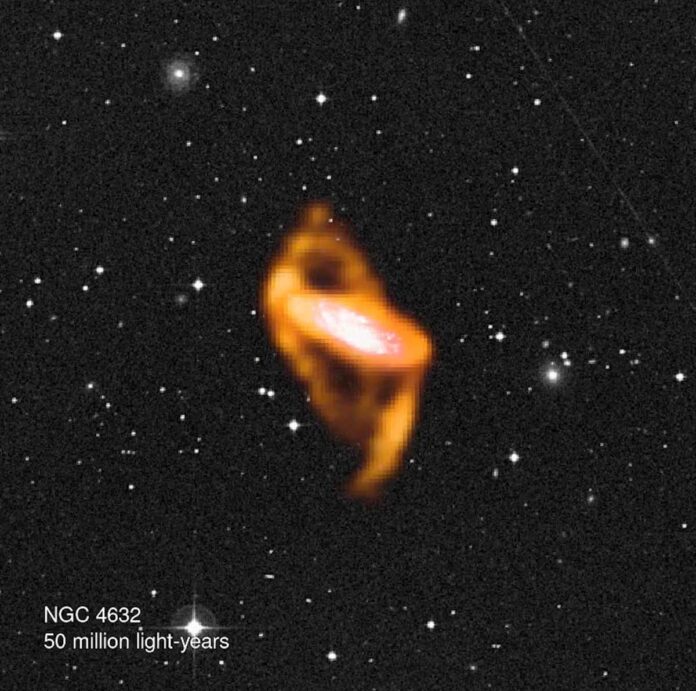A radio telescope in remote Western Australia is contributing to the creation of a three-dimensional map of the night sky. It mapped nearby galaxies up to a billion light years away.
The WALLABY (The Widefield ASKAP L-band Legacy All-sky Blind surveY) Pilot Survey, will share its first data release with the scientific community. It will allow us to better understand nearby galaxies and galactic clusters. This was published today in the Publications of the Astronomical Society of Australia.
In Phase 1 of WALLABY, hundreds of galaxies were surveyed, covering 180 square degrees of the observable sky. It is the equivalent of over 700 full moons.
A quarter-million galaxies are expected to be catalogued during the survey. It will allow researchers to measure dark-matter distribution, galaxies’ internal motion, and how these systems evolve and interact.
Dr. Tobias Westmeier of The University of Western Australia’s node of the International Centre for Radio Astronomy Research (ICRAR/UWA) and the ARC Centre of Excellence for All Sky Astrophysics in 3 Dimensions (ASTRO 3D) said the data collected by WALLABY will allow us to investigate the Universe at a scale that optical telescopes alone cannot.
“If our own Milky Way is in the way of the galaxy we’re trying to observe, the sheer number of stars and dust makes it incredibly difficult to see anything else,” Dr Westmeier explained.
“WALLABY is unaffected by these constraints. It’s one of radio surveys’ greatest strengths. They can simply peer through all the stars and dust in our own Milky Way.”
It is the first full 3D survey of this scale. It has over 30 terabytes of data collected from the ASKAP radio telescope in Western Australia’s remote Mid West region each eight-hour day.
Dr Karen Lee-Waddell, co-author and Director of the Australia SKA Regional Centre, said the project will show us where these galaxies really are in three-dimensional space. It split up galaxies that appear clustered together but are millions of light years apart.
“WALLABY will allow us to directly map and detect hydrogen gas.It is the fuel for star formation,” Dr Lee-Waddell said.
“With this data, astronomers can precisely group galaxies in order. It will help them to better understand how they interact with one another when clustered together. And provide insight into how galaxies form and change over time.”
Because of the sheer size of the survey, the WALLABY catalogue is expected to yield many new observations and discoveries.
“Many of the over 600 galaxies measured thus far have not been catalogued at any other waveband and are considered new discoveries,” said WALLABY’s Principal Investigator and co-author Professor Lister Staveley-Smith (ICRAR/UWA).
“So far, more than a dozen papers have been published describing new discoveries based on these early observations.”
Dr George Heald, Director of the CSIRO’s Australia Telescope National Facility Science Program, stated that these projects were made possible by ASKAP’s ability to collect data on a never-before-seen scale.
“Our observatory is one of the world’s most radio-quiet locations. It allows projects like WALLABY to find narrow and faint astronomical signals without being swamped by radio interference,” Dr Heald explained.
The international project is collaborating with AusSRC, the Canadian Astronomy Data Centre (led by the National Research Council of Canada), and CSIRO, as well as many international universities. It will process and catalogue the data into a usable database for astronomers to access.
Professor Kristine Spekkens of Queens University and the Royal Military College of Canada is a co-author of the paper and a member of the WALLABY team’s Executive Committee.
“WALLABY benefit from contributions from researchers all over the world in order to make scientific breakthroughs,” Prof Spekkens said.

